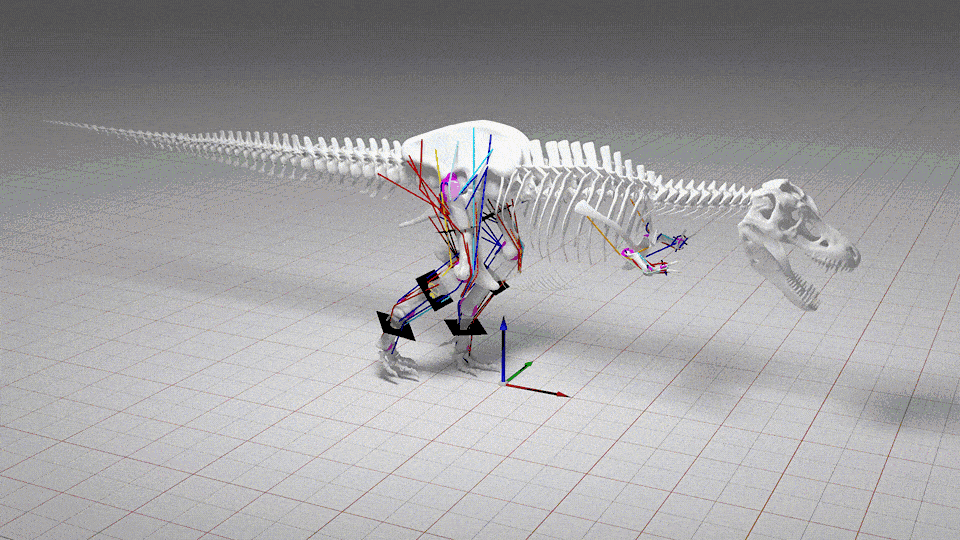When you buy through data link on our site , we may bring in an affiliate commission . Here ’s how it works .
A beaky , crest dinosaur dub the " chicken from hell " has been hear in both North and South Dakota .
This was not a " Gallus gallus " you ’d need to falter across in the barnyard : The newfangled dino , dubbedAnzu wyliei , was about 11 feet ( 3.5 meters ) long and about 10 feet ( 3 m ) tall . It boasted a flashy head crest and probably wore feather . Anzu wylielilived at the same sentence asTyrannosaurus rex , but was more lithe and graceful , pronounce study researcher Emma Schachner .

Anzu wyeliei, the newly described “chicken from hell,” lived until about 66 million years ago.
" It ’s a clean delicate fauna liken to the expectant vulture that were living at the time , " Schachner , a postdoctoral researcher at the University of Utah , recite Live Science . [ Avian Ancestors : Dinosaurs That Learned to take flight ]
find a novel species
Anzu wylieli ’s write up starts about a X ago with paleontologist Tyler Lyson , now at the Smithsonian ’s National Museum of Natural History . Lyson and his squad were get the picture in westerly North Dakota near the Montana border when they discovered six bones of an unknown metal money . Schachner work with Lyson to analyze and separate the bones , and the pair present the finding as a raw species at a paleontology league soon after .

Anzu wyelieiwas about 11 feet (3.5 m) long and boasted a head crest.
At the conference , Matthew Lamanna , a vertebrate paleontologist at the Carnegie Museum of Natural History in Pittsburgh , came over with surprising news : Those six ivory were not the only case of this young species out there . A private aggregator had set up two nearly complete skeletons of the same fauna in South Dakota , and the Carnegie Museum had just acquired thosefossils .
" Matt come over and articulate , ' Oh my gosh , this is the same specimen that Carnegie spend a lot of money to corrupt , ' " Schachner say .
The research worker harmonise that it made no sense to name the species based on six bones when two most terminated skeleton were awaiting depth psychology . They worked together over the next decade , also fulfil up with the Smithsonian ’s Hans - Dieter Sues .

Naming the hell chicken
That oeuvre has finally come to fruition , with the investigator publishing their finding today ( March 19 ) in the journalPLOS ONE . It is the first time Schachner has been involve in the naming of a dinosaur .
" That ’s one thing , when you ’re a little kid , you kind of always aspiration of doing , " she said .

The brute has two namesake . The first , Anzu , interpret to intend " Mesopotamian feathered demon . " The fresh fossil were notfound with feathers , Schachner said , but the dinosaur ’s close relatives had them , and it ’s highly likelyAnzu wylielidid , too .
The second part of the name , wylieli , refers to a male child named Wylie , the grandson of a major donor to the Carnegie Museum . The researchers did kick around some joke names before settling onAnzu wylieli , however . A dearie , Schachner said , wasPhobo gallus , which rough translates to " revere chicken . "
TheAnzubones were find in an surroundings that was once a mucky floodplain . The dinosaur lived during the Late Cretaceous , between about 100 million and 66 million years ago . It was in all likelihood omnivorous , eating plant , eggs and perhaps belittled animals . One of the specimen was rule with detritus of shells and tiny vertebrae between its ribs and pelvis , but the scientists are n’t sure whether these fogy representgut contentsor whether they simply washed up next to the dinosaur bones .

The bone do , however , show grounds of the dinosaurs ' rough - and - tumble macrocosm . The North Dakota specimen has what looks like a broken and slightly heal rib . One of the South Dakota specimen show bony healing suggest harm to the toe .
Anzu wylieiis part of a grouping called oviraptorosaurs , which are closely connect to birds . The dinosaur is also part of an oviraptorosaur subgroup call the caenagnathids , which are an " enigmatic group of dinosaur , " Schachner said .
" They ’re not really well - sleep with , " she said . " This is a warm add-on to the radical where you have the anatomy clear detailed . "














